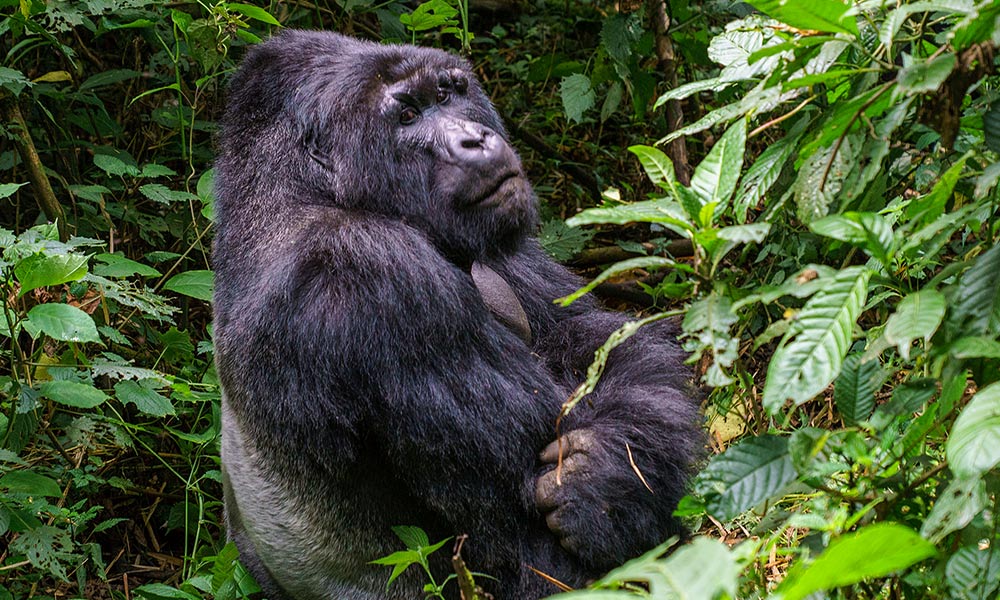The management of game reserves is a wide ranging task, involving ecological studies and hands-on implementation of conservation practices. Generally, the reserve managers will attempt to create a balance of ecological diversity within the reserve, reflecting the natural composition of species as much as possible.
As game reserves are in restricted areas, it is no longer possible for wildlife to roam free across the countries as they once did many years ago. There are a number of ‘transfrontier’ parks where neighbouring countries have removed the borders between their reserves to allow animals to roam more freely, but this is still something that requires management.
Carrying Capacity
This term refers to the amount of animals a particular area of vegetation can sustain, without detriment to the animals or the vegetation. When populations of herbivores have become too large and they have exhausted all their natural resources, they will have reached their ecological carrying capacity.
In turn, if there are too many carnivores and not enough herbivores to prey on, the carnivores will also be growing near their carrying capacity. Most game reserves attempt to manage the balance of animals so that all populations are close to their carrying capacity but not over it, thereby creating a natural abundance of animals but within the ecological limits of the land. This is, however, a hotly debated subject and it is not always clear what the capacity for a certain species should be.
Culling and Cropping
Whilst cropping involves the destruction of single animals, culling takes place on a larger scale. When a population of a particular species becomes too dense and either the vegetation or the other animals start to suffer because of it, the population needs to be reduced. With herbivores, high populations can lead to overgrazing, which if left untreated, can mean the permanent destruction of vegetation without allowing it to grow back.
The culling and cropping of animals is a contentious issue and some wildlife campaigners are against this practise. But it is a fact that in a managed area of wildlife, something needs to be done to control the populations and the most effective method to date involves this type of management plan. Frontline conservation is about proactive, practical and realistic solutions for managing wildlife and flora.
Burning
Vegetation needs to be utilised by animals in order for it to sustain a natural balance and a healthy re-growth. When grasses and other vegetation are not used, they start to deteriorate. Veld fires have always been a natural occurrence, caused by both manmade fires and lightening. Therefore a few methods of vegetation burning are employed to keep the veld healthy.
A method called the cool burn is used after good rainfall, and only to remove dying grasses without damaging other vegetation. A hot burn is a much more destructive method that is carried out in dry bush, and consumes large areas of vegetation, including small trees and shrubs. And lastly a point burn aims to simulate a natural fire by burning at a random point and allowing it to die out naturally. This can only be implemented in large areas capable of sustaining this type of habitat burn.
Bush Encroachment
A number of plant species flourish when the grasses have been overgrazed, leading to a huge increase of invasive woody plants such as the sickle bush and mopane, among others. These plants then dominate the landscape and prevent new grasses from growing, leading to a lack of grazing ground and an over abundance of thick bushveld.
The encroachment is cleared using a number of methods from cutting down the shrubs with chainsaws and then using herbicides to kill the root system, to even using bulldozers to clear large areas. Plants such as the sickle bush are extremely tough, both in wood and thorn composition and in their ability to withstand physical and chemical attack, so they are often a game ranger’s nightmare when it comes to clearing large areas of encroachment!
Erosion Control
The erosion of soils can lead to areas devoid of plants and unstable ground where nothing can grow, as well as rough rutted ground that has been weakened by the erosion from rain water and wind. This erosion can occur as a result of bad water drainage, where channels such as game trails and small paths turn into conduits for water to run along until it finds a ditch to fill, known in Southern Africa as a donga (from the Zulu word meaning ‘wall’).
The other type of erosion occurs on large flat areas where sheets of water erode the top soil, leading to a degradation of soil quality and making it hard for plants to survive. The fewer the plants, the faster the erosion, leaving the soil exposed to the forces of wind and water.
Furthermore, soils such as loam and clay are particularly sensitive to vehicle activity, and for this reason roads made from these soil types are usually restricted to dry weather use in game reserves, as a game vehicle travelling along a loam or clay road in wet weather will leave permanent and damaging ruts in the road surface.








